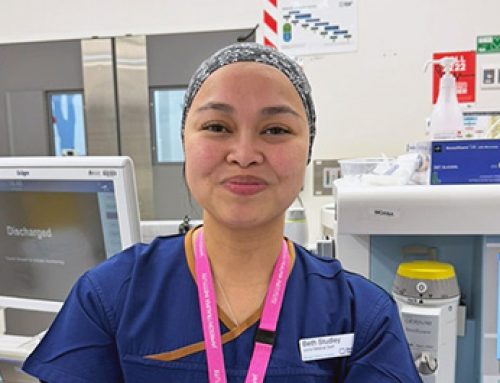Cost-IS: An instrument for costing implementation strategies
By Thomasina Donovan, AusHSI Research Fellow and PhD Scholar

Increasing healthcare costs are driving the need for high-value innovations to ensure the sustainability of the healthcare system. Economic evaluations are often used in healthcare to allocate scarce resources to the programs that will be of greatest benefit. However, the true costs of implementing new programs are often not fully factored into these economic evaluations, which can impact decisions about whether they represent value for money compared with current processes.
Implementation costs are those arising from the methods or techniques, such as facilitation or audit and feedback, that enhance the adoption, implementation, and sustainability of an intervention – known as implementation strategies.
Due to a lack of guidance around best practice data collection and costing processes, implementation costs are not often reported. Closer collaboration between health services and researchers is likely to encourage these much-needed trans-disciplinary approaches. During my PhD, I applied knowledge from both implementation science and health economics to develop a new instrument to support data collection and analysis of healthcare implementation costs.
Known as the Costing Implementation Strategies instrument, Cost-IS provides practical guidance and tools for collecting data and estimating resource costs associated with implementation strategies in health services research. It comprises three templates that guide data collection on healthcare intervention implementation costs. Cost-IS was developed in stages from the findings of a literature review, qualitative interviews, expert consensus, and real-world pilot studies. Using the Cost-IS instrument effectively involves understanding the project, identifying implementation activities and resources, systematically documenting the resource use data representing the implementation strategies, and valuing activities in monetary units.
I have had opportunities to showcase Cost-IS to key stakeholders including local, national and international implementation scientists and health economists. At the Implementation Science in the Real World (ISRW) colloquium hosted by AusHSI in August 2024, I was invited to present the Cost-IS instrument to leading implementation scientists and highlight the challenges and importance of costing implementation. The following month, I presented Cost-IS to health economists at the Australian Health Economics Society (AHES) Conference. Although aware of the challenges, health economists appreciated the standardised approach Cost-IS provided.
Later in September, I presented a poster on Cost-IS at the Society for Implementation Research Collaboration (SIRC) conference in Colorado. It was interesting for me to observe how Cost-IS could be useful in the US context and, particularly, to network with those from the Economic Evaluation in Dissemination and Implementation Research: Identifying Value Through Integrated Outcomes session.
While in Colorado, I reached out to the Dissemination and Implementations Science Program group at University of Colorado, who have recently developed a very helpful implementation science costing guidebook. The Director, Prof Russel Glasgow, an original developer of the RE-AIM framework, invited me to meet with the team and present on Cost-IS at their monthly team meeting. It was great to discuss similarities and differences of costing implementation and related activities between Australian and US projects.
Most of my conference travel was supported through my scholarship with the Digital Health Cooperative Research Centre (DHCRC). The DHCRC has supported a number of opportunities, including attending the 2024 Curiosity Camp which aimed to support upskilling and network building. During this event, other DHCRC HDR students and I tackled real-world healthcare challenges faced by Lymbase; a digital health platform that supports patients with chronic swelling, and the clinicians who treat them. We were guided by Robyn Sierla (Lymbase founder), facilitators and industry mentors. During camp we discussed the development of a learning health system, reimagined the business model, redesigned the user interface, and crafted a funding pitch. The camp setting also fostered opportunities for genuine and superb mentorship between team members.
I am excited for the upcoming Health Services Research Conference running from 4–6 December in Brisbane, where I will be presenting Cost-IS on Thursday 5th December in the session Cutting edge methods and meta research. Please see the conference program for more details.
This doctoral research program was made possible by the Digital Health Cooperative Research Centree (DHCRC). It was conducted in partnership with the Australian Centre for Health Services Innovation, QUT.







